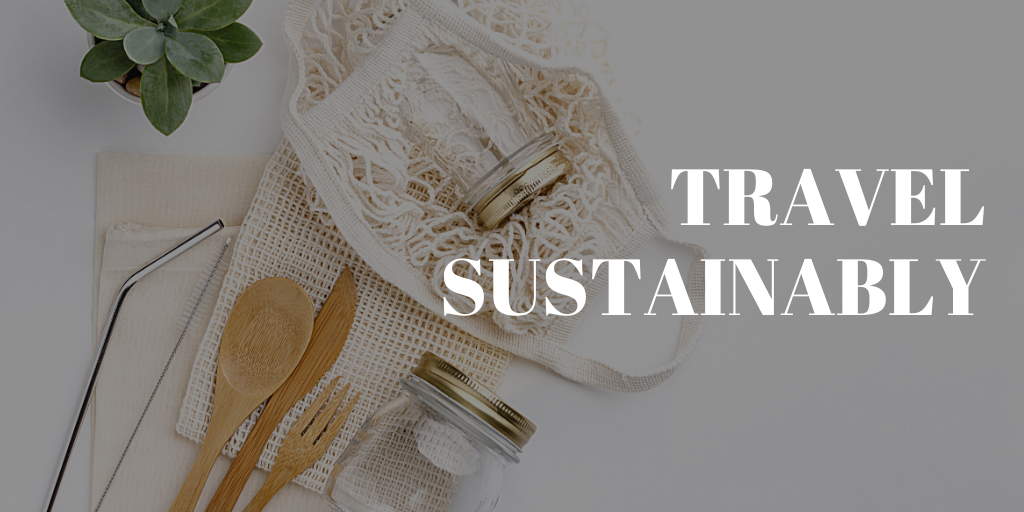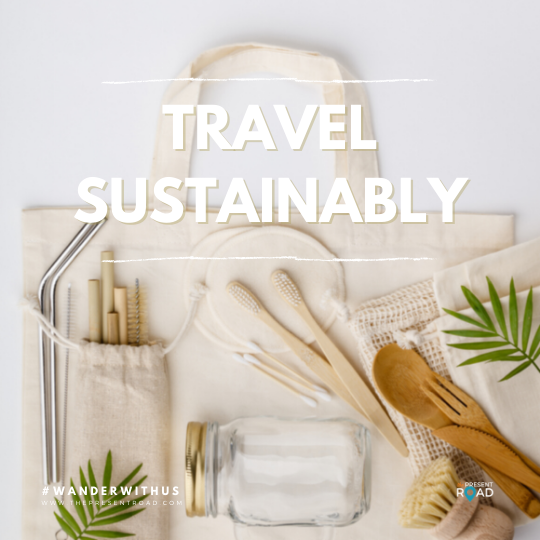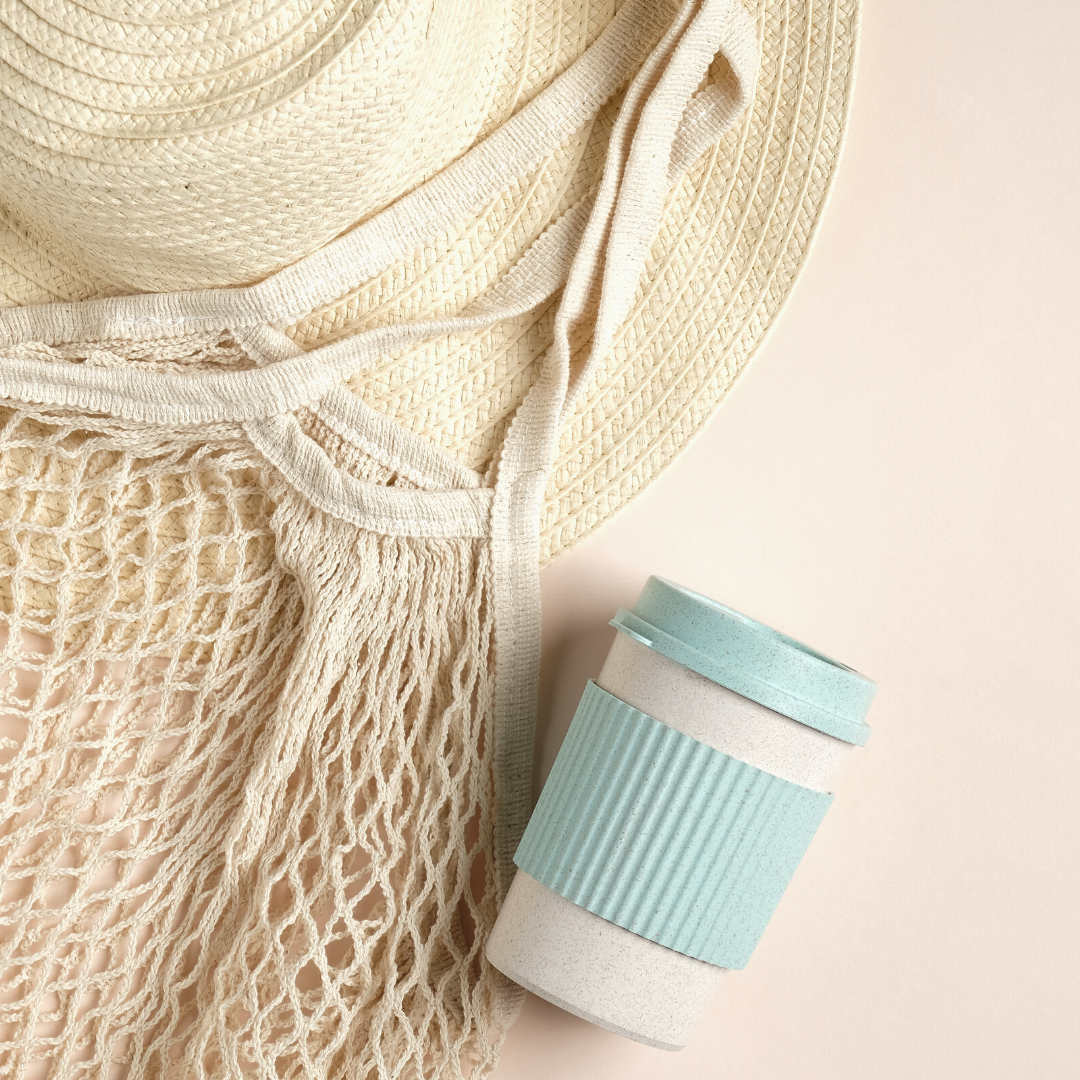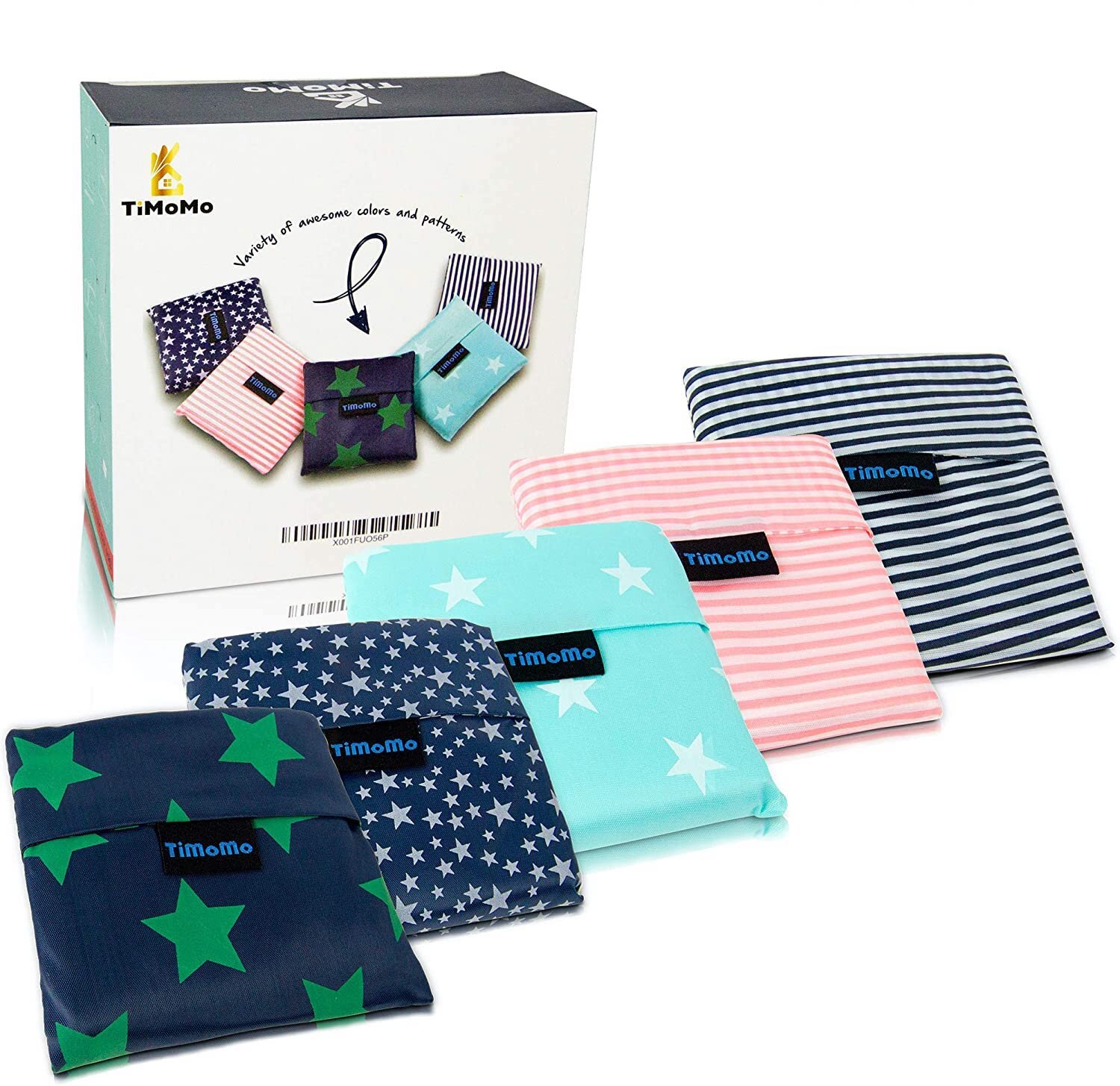Tips to be a more sustainable traveler
What is sustainable travel? For us sustainable means to have the smallest impact during our travels to the environment and local cultures.
Let’s look at ways in which our visit can affect the destination
Pollution
A relatively easy fix is pollution, we just need to know where we can do better and voila! we can fix it. So let’s look at each and their possible solution:
Carbon footprint
In general many of us can stand to reduce our carbon foot print but when it comes to travel specifically, flying and water consumption are the biggest ones we can act on.
Flying is particularly polluting because of the airplane’s jet engines. Trying to avoid air travel is really the best way to travel more sustainably, but sadly we don’t always have time to take the slower route. If you end up traveling by air, many companies offer carbon footprint offsets and ‘Postcards from Hawaii’ has a very informative blog post that digests it all nicely. Check it out here - postcardsfromhawaii.co/home/how-to-carbon-offset-your-flights.
Water consumption is also a biggie and probably not one that you want to know about. This one means kissing those long, luxurious baths bye bye and instead opting for a short, efficient shower. Now, let’s say you travel to a tropical area where it rains A LOT! You are probably thinking, I can definitely take a long shower, or bath, because they have so much water. Sadly that’s not always the case; don’t assume that because you see a lot of water, there really is. For example, 12% of the population in Fiji (home of the famous Fiji water) does not have access to fresh water even though it rains, a lot. This doesn’t mean you can’t take a bath every so often, or even a long shower, but to be a more sustainable traveler, water awareness is a must.
You can check your current footprint at carbonfootprint.com (albeit not a pretty site, but very informative).
Waste
Wastefulness also seems to pervade travel; disposable utensils, plastic bags, water bottles are all more OK when we travel than at home. But, do not despair, this can easily be solved with just a little planning ahead.
Reusable bottle - it’s no frill solution to significantly reducing those pesky single use plastic bottles that end up in the ocean - YAS! In our opinion, look for an insulated bottle that doesn’t weigh too much when it’s empty. If you are traveling to a less developed country, maybe buy one with an integrated filtering system. We like The Grayl a lot - you can check them out at www.grayl.com #notSponsored.
Reusable bag - another quick and easy way to reduce single use plastic bags. All you need is a little planning. We suggest you pick fabrics that dry quickly and fold small. Our favorite bags from Amazon, right now, are these USD 14 TiMoMo reusable bags because they dry fast, have a pretty big capacity and pack small when folded. We each carry one in the outer pocket of our daypack
Reusable utensils - this is the trifecta of reusableness! Yes, that’s not a word, but it should be because it’s that good for the environment. Although reusable utensils, particularly those made from wood don’t feel as nice as those made from metal, especially if you are diving into a steak, they do work better than plastic ones. We only carry chopsticks and reusable straws because we are mostly plant based eaters but if you are looking for a small set, we’d recommend the Uptrust Bamboo set for 2, it’s about USD 10, so just USD 5/set.
Bathroom bars - this one is another area where we can easily reduce waste. In particular, shampoos, conditioners and soaps. Although both a shampoo and a soap bar might take a bit of practice to travel with, we think it’s well worth the effort. A shampoo bar (or soap) will last you much longer than the equivalently sized liquid version; you won’t need a plastic bottle to hold it (even if that bottle is refillable, which we know is better than the one time use ones) and you don’t have to worry about your carryon liquid limit - win win! And for a conditioner, I use just a little bit of Jojoba oil but other oils such as coconut or moroccan oil work well too. Like with the bar, a little bit of oil will go a loooong way.
Facial oil serum - Fermin and I have switched over to oil serums over lotions and we love it! We’ve found that a small bottle of serum will last much longer than the equivalently sized lotion and we can avoid the unnecessary plastic as most serums come in glass bottles. We make our own and our favorite recipe is the Humble Bee and Me Luxury Facial Serum but there are many available that come in eco-friendly glass bottles.
Toothpaste - lastly in the toiletry category is the toothpaste. We are currently using just baking soda which is a bit salty and not as nice as regular toothpaste, but we feel the compromise is worth the amount of plastic we’d waste in each tube of toothpaste, especially the travel sized ones. While this solution won’t work for some, we encourage you to try brushing your teeth with baking soda, or an alternative less-waste generating toothpaste. Not only will you be polluting less but it’s also more carryon friendly.
Sustainable Tourism
Now that we've worked on reducing how much we pollute, let's talk local tourism. Although there are many ways our visit could impact local culture, we think of sustainable travel as leaving the smallest footprint we can. That also means encouraging businesses to make sustainable choices for when tourist come to visit.
Accommodations
Our best tips for accommodations are pretty easy
Stay long-er - Like we mentioned above, travel is a big part of our travel footprint and the longer we stay in one place, the smaller our impact.
Try to stay close to the places you are visiting - this will mean you’ll have to take less transportation; good for your wallet, your body and the environment.
Choose eco-friendly as much as possible. When we visited the Madikwe Reserve in South Africa we got to stay at a super cool eco-hotel that wasn’t expensive. Hotels that have alternative energy sources, low flow toilets and showers, or maybe sustainability certifications such as LEED or other equivalents are good signs of a business really trying to be more sustainable. You can find all the details of our Safari, including the awesome lodge, in this blog post.
Support local businesses - there is nothing wrong with staying at your favorite hotel chain, especially if you have points, but when you do, try to support local business by not eating in the hotel every night or shop at the local market instead of the souvenir shop at the hotel.
Getting around
You might be tempted to hire a private driver to see more sites but where it’s safe, try to take public transport. Sustainable travel is not just about ticking off sites on a list, it’s about having the least impact during your visit. Plus, using public transport will also allow you to glimpse into the lives of locals which we think is a huge plus. If it’s not safe to take public transport, then consider taking a tour with more people, over a private car, as this will also have a smaller carbon footprint.
After we are gone
Whether we want it or not, our visit will ripple through the local economy. In some cases this can be a force for good, and in other cases it can create industries that we really don't want to be promoting. Thinking about how our visit impacts the future will let us make better decisions. Here's a few examples of things to promote and others to avoid
Promote
Real local businesses - sometimes it’s not so straightforward what is real and what is for tourist but try, as much as you can, to see the local side. Not only will you be really supporting local business, but you’ll also get to interact with the people who live in that place.
Support organizations that promote sustainability - sometimes this comes at a higher price but in our opinion it’s worth it. Of course, do your due diligence that they are truly a more sustainable option.
Use reef safe sunscreen - those beautiful coral reefs you had the privilege of snorkling in won’t be around if you use sunscreen toxic to the coral reefs.
Pass on changing the towels every day - promote water conservation by choosing to change your towels less often.
Refuse plastic bags - use your reusable bag. If all tourist do this we’ll be teaching locals they need a lot less plastic bags.
Recycle, recycle, recycle - as with refusing plastic bags, our small actions like these promote change in the local culture.
Avoid
Animal tourism - AT ALL COSTS! This one is a BIG one. You MUST DO the research because there are a lot more bad outfits than there are good ones. Petting elephants in Thailand, riding elephants in India, koala sanctuaries that happen to have a lot of other animals in captivity and for show. There are many tour operators doing the right thing, just do your homework
Exotic foods - and by exotic we don’t mean foods you’ve never tried at home but are readily available in the place you are visiting; we mean, foods that are available in very limited quantities such as shark fins, birds nests, maybe Kopi Luwak coffee in Indonesia. It is very rare the case that you’ll find it sustainable to consume rare foods. Sometimes you might even be committing a crime. Do your homework because not-knowing is not an excuse.
Trespassing because the locals said it’s ok. Unless the local has permission to be in the property (in which case it wouldn’t be trespassing) remember that the lure of easy money can make even good people do shady things. We’ve seen so many people trespassing on World Heritage sites because the locals said it’s OK. It’s NOT OK - you don’t know why the rule is in place and it’s not our job as good guests, to question it. If you do want to change something, go through the proper channels to do so.
Straying from the trail - Particularly in the Instagram world we live in, people tend to stray off the marked path to take pictures. Or maybe to just pass a slower hiker. Avoid stepping off the trail, especially with the volumes of tourist that are traveling around the world, we will do so much damage if we all do whatever we like.
This might be our longest post to date, but we really feel that these tips will help make you a more sustainable traveler. What did you think? did we miss anything? As always, feel free to leave a comment below.
* Unless otherwise noted, the products we recommend are the ones we are using and bought ourselves. Some items on this blog post may include affiliate links to Amazon and its affiliate sites. The links won’t cost you any extra because the commission is paid by the retailer but it will help us run our blog. So, many thanks in advance if you do use our links! See our Affiliate Marketing page for more info.
















